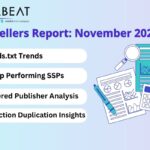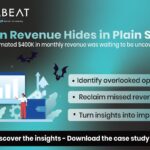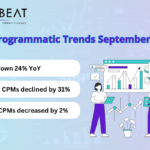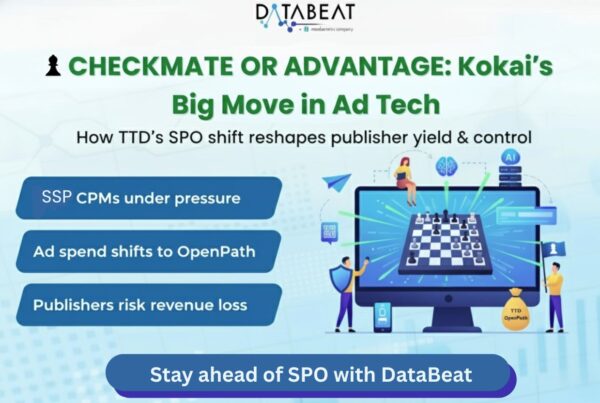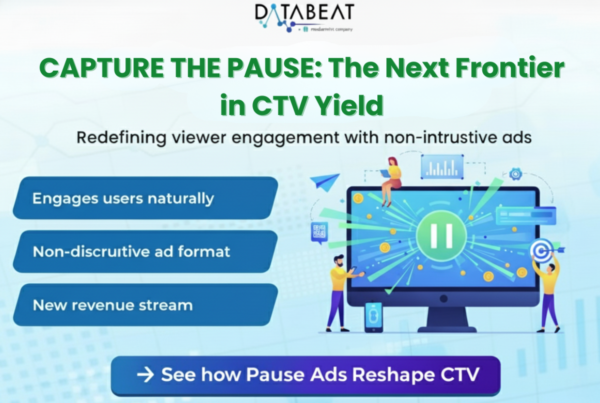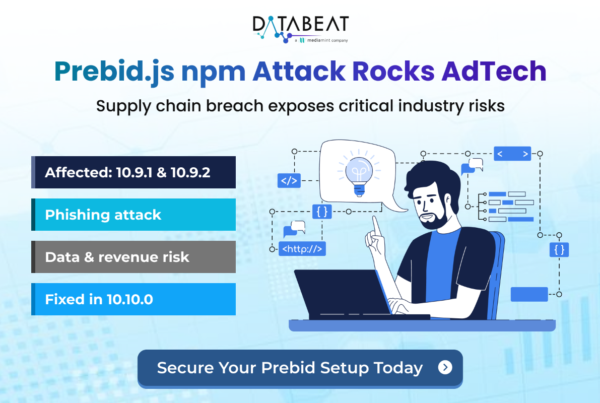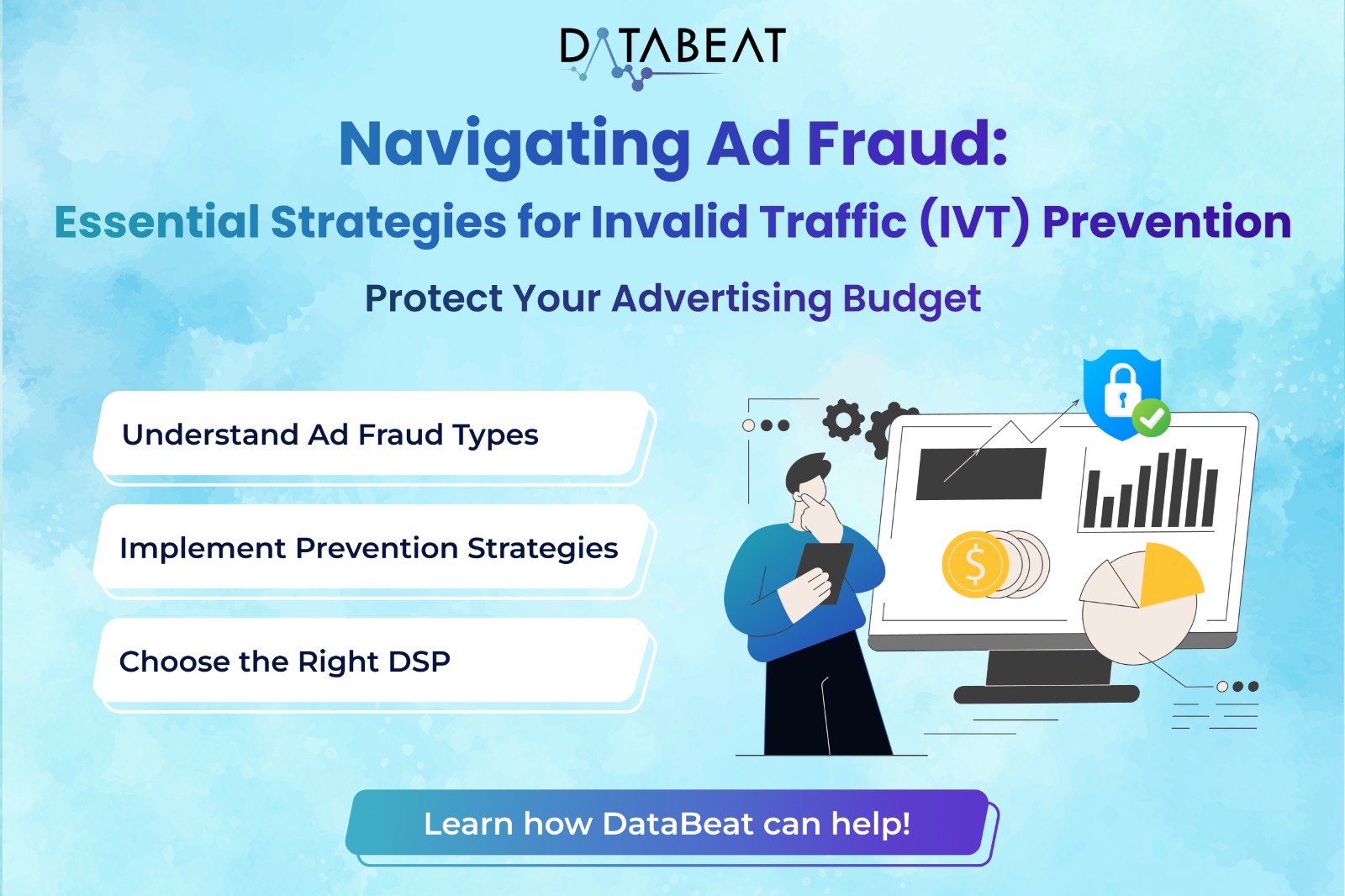
Navigating Ad Fraud:
Buy-Side Strategies for Invalid Traffic (IVT) Prevention
- Ad fraud is one of the major challenges faced by the DSP. It involves issues like bots/ invalid traffic and fake impressions and conversions. Ad fraud can also significantly harm the digital advertising ecosystem, indirectly impacting advertisers, publishers, and even users.
👉 For further information regarding DSP’s:
https://DataBeat.io/knowledge-base/demand-side-platform/
What is Ad Fraud and the different types?
- Ad Fraud is a malicious practice that targets DSPs and their advertisers, leading to the misuse of advertising budgets.
- Click Fraud: In this scenario, the deception is that fraudsters run ads to generate fake clicks on advertisements which renders the performance metrics useless.
- Automated Bots Clicks: Bots can simulate human behavior by clicking on ads.
- Low-Cost Laborer Click Farms: Repeatedly clicking an advertisement using devices increases the click-through rate (CTR).
- Forced Clicks: Ads can also be misleading where users unknowingly click the ads using deceptive layouts or pop-ups.
Impact: This gives advertisers the impression that their campaigns are performing well and eventually leads to the ad spend being wasted.
- Bot Traffic (Non-Human Traffic): The bots mimic human behavior by opening browsers, simulating clicking on ads, or even converting. Non-Human traffic is of two types:
- Sophisticated Bots: These bots are highly advanced and mimic human actions such as mouse movements or scrolling.
- Simple Bots: Mimicable repetitive actions and predictable traffic patterns.
Impact: This increases the cost of the ad campaigns giving no returns in real engagement.
- Domain Spoofing: This happens when domain fraudsters advertise low-quality or fraudulent websites as reputable publisher domains when other companies are buying advertisements.
- A fraudster disguises their low-quality domain as ‘cnn.com’ while selling it on ad exchanges.
- Ads are placed on websites that do not have the advertising space that was guaranteed.
Impact: The advertisers end up paying a high price to hold advertising space on a franchise that is defrauded or very low quality.
- Geo-Masking: This takes place when advertisement fraudsters falsify user location data to give the impression that the traffic is from a region with high geographic value.
Impact: Advertisers are not getting the traffic that they are trying to target which costs them more than they want to spend.
- Ad Injection (Ad Hijacking): Ad fraudsters replace original ads with their own new ads without the consent of the publisher into a website or application, creating fake advertisements
Examples:
- Browser Extensions: Without the permission of the publisher, ads are placed on the publisher’s website.
- Malware: Devices belonging to users get infected with software to switch out normal ads for fake ads.
Impact: The user’s experience, brand image, and advertisement income are all damaged because funds are lost to ad fraud.
- Cookie stuffing: This type of ad fraud occurs when the fraudster deposits many ad cookies into a user’s browser claiming payment for legitimate conversions.
Example:
- A user opens a particular website and the fraudster crams a number of tracking cookies into the unsuspecting user’s browser to take credit for future purchases.
Impact: Misleads attribution models, stealing revenue from legitimate affiliates or advertisers.
What causes Ad fraud from the DSP end ?
- DSPs rely on supply-side platforms (SSPs) to provide inventory. Fraud can occur if SSPs fail to validate the inventory or misrepresent data.
- DSPs participate in millions of auctions every second, leaving limited time to verify the authenticity of each impression.
- Fraudulent or low-quality data used for targeting can lead to inefficient bidding and wasted ad spend.
- DSPs use machine learning to optimize campaigns based on metrics like CTR and conversion rates, which fraudsters can manipulate.
Major Impact of Ad Fraud on DSPs
- Misused spending on advertising:
-
-
- Misleading clicks and conversions cost advertisers money while diminishing the results that DSPs provide.
- Errors in metrics and adjustments:
- Bad clicks lead to fake statistics on how the campaign performed, and complicate bettering bids or targeting the right audience.
-
- Loss of reputation:
-
- Having fraud committed against them via a DSP can result in advertisers losing trust, which can make them move away from the platform.
How DSPs can prevent Ad Fraud
-
- PreBid Fraud Detection :
- DSPs run integrated with third party verification tools like doubleverify, Integral Ad Science or Moat to confirm digital inventory prior to placing a bid.
- Impressions from suspicious sources are blocked by pre-bid filters.
- Integration with Ads.txt and App-ads.txt:
- DSPs use ads.txt files as a mechanism for ensuring they only buy ad inventory from verified sellers. Mobile in-app inventory is also protected by app-ads.txt.
- PreBid Fraud Detection :
- Real-Time Monitoring and Alerts:
-
-
- DSPs are able to detect fraud by tracking bidding, impressions, and performance metrics for suspicious activity. An example would be sudden traffic increases from low value regions.
-
- Machine Learning and AI:
-
-
- DSPs are able to block traffic generated by suspicious users with irregular click patterns, outliers in the time taken to click, and bid requests along with request patterns.
-
- IP Blacklisting:
-
-
- The blocking of known IP addresses of fraudulent accounts to stop advertising from being shown to bots or false users.
- Supply Chain Transparency:
- Products such as sellers.json and SupplyChain Object give insight into the intermediaries publishing the inventory.
-
- Post-Bid Analysis:
-
-
- DSPs examine impression data to refund for any spent on fraudulent activity after the campaign and ad has been run.
-
- Direct Publisher Deals:
-
- DSPs can engage in open auction buying, but are less likely to be exposed to fraud if they focus on dealing with known publishers.
Best Practices for Advertisers looking to choose DSPs
- Partner With Highly Regarded DSPs:
-
-
- Engage with DSPs who are dedicated to preventing fraud and working with anti-fraud suppliers.
-
- Turn On Verification Mechanisms:
-
-
- Of particular importance are DSPs that can accommodate third-party advertising verification services in order to track fraudulent activities in campaigns.
-
- Target Viewability Rate:
-
-
- Ensure you spend on placements where viewability is high-indexed and shun over cheaper high-risk options.
-
- Conduct Reviews on Campaign Data Constantly:
-
-
- Look out for unusual patterns such as sudden spikes in impressions, clicks and conversions.
-
- Utilize Ads.txt:
-
- Ensure your DSP works with publishers using ads.txt or app-ads.txt files to obtain inventory.
👉 For further information: https://DataBeat.io/knowledge-base/the-ultimate-guide-to-ads-txt-management-for-ssps-best-practices-and-insights/
Conclusion :
From the DSP’s perspective, advertising fraud can often be a multifaceted threat, but it is possible to keep the advertisers safe and maintain the value of programmatic advertising with stringent anti-fraud policies, transparency measures, and active collaboration with verification companies
How can DataBeat help to prevent IVT ?
DataBeat assists DSPs and advertisers combat ad fraud and Invalid Traffic (IVT) with transparency, control, and efficiency. DataBeat also provides greater visibility into the ad supply chain, allowing real-time monitoring to identify anomalies and prevent fraudulent inventory. With integration into pre-bid and post-bid verification tools, DataBeat maximizes campaigns, enhances targeting, and protects ad budgets.


